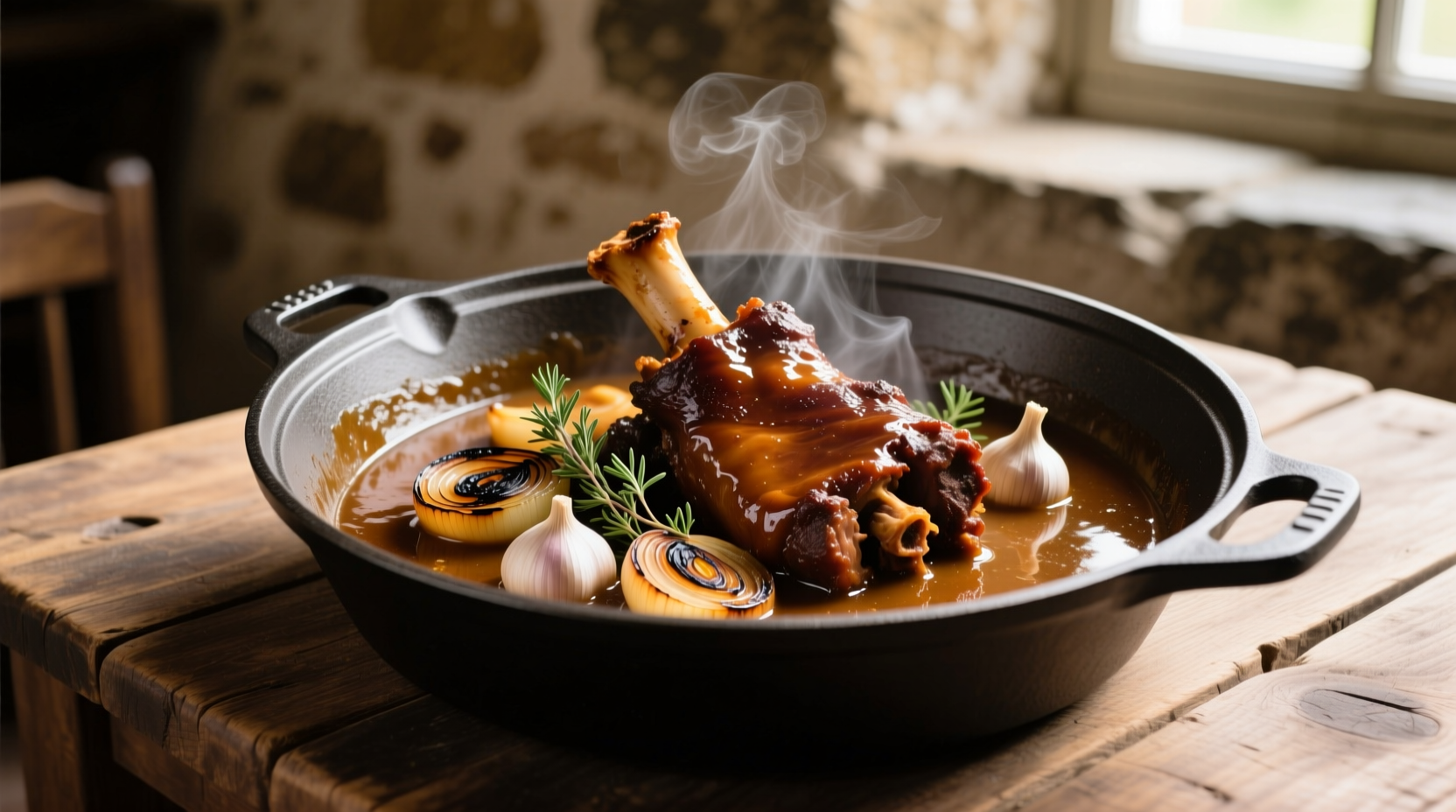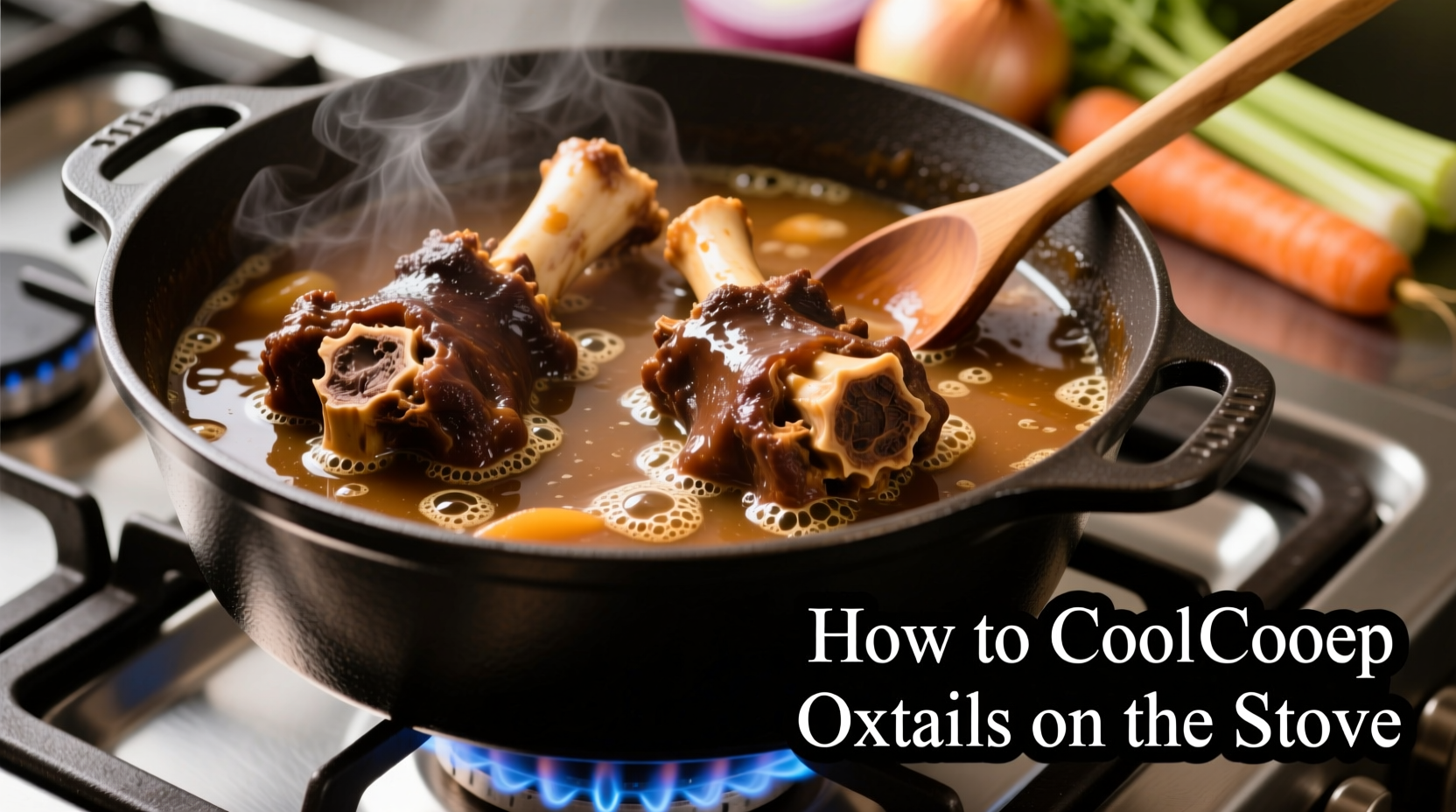Perfectly tender oxtails on the stove require 2.5-3 hours of braising at a gentle simmer after searing. Start by seasoning 3-4 lbs of oxtails with salt and pepper, then sear them in a heavy pot for 3-4 minutes per side. Add 1 cup of liquid (beef broth or water), cover tightly, and simmer on low heat until fork-tender. Skim fat during cooking for best results.
The Ultimate Stovetop Oxtail Method: From Tough to Tender
Nothing transforms humble oxtails into culinary gold like proper stovetop braising. As a Latin American cuisine specialist who's perfected this technique across Caribbean kitchens from Havana to San Juan, I've discovered the precise balance of heat and time that turns these collagen-rich cuts into fall-off-the-bone perfection. Forget complicated equipment—your trusty pot and a little patience are all you need.
Why Stovetop Beats Other Cooking Methods
While slow cookers and ovens have their place, the stove offers unmatched control for oxtail cooking. You can immediately adjust heat when you see bubbles breaking the surface—critical for maintaining that ideal simmering temperature between 180-205°F (82-96°C). This precise temperature range breaks down collagen without toughening the meat fibers, according to USDA Food Safety and Inspection Service guidelines on tough cut preparation.
| Cooking Method | Time Required | Texture Result | Flavor Development |
|---|---|---|---|
| Stovetop Braising | 2.5-3 hours | Fork-tender with structure | Rich, concentrated broth |
| Slow Cooker | 8-10 hours | Very tender, sometimes mushy | Milder flavor profile |
| Pressure Cooker | 45-60 minutes | Extremely tender | Less complex broth |
Your Essential Oxtail Prep Checklist
Before you start cooking, gather these non-negotiable items:
- Heavy-bottomed pot (Dutch oven ideal) - prevents scorching during long cooking
- Meat thermometer - confirms internal temperature reaches 200°F for optimal tenderness
- Tongs and slotted spoon - for safe handling of hot meat
- Fat skimmer - removes excess fat for cleaner flavor
Pro tip: Ask your butcher to cut oxtails into 2-3 inch segments. Uniform pieces ensure even cooking—irregular cuts lead to some portions overcooking while others remain tough.
Step-by-Step Stovetop Cooking Process
Phase 1: Searing for Flavor Foundation (15 minutes)
- Pat oxtails completely dry with paper towels—moisture prevents proper browning
- Season generously with kosher salt and freshly ground black pepper
- Heat 2 tbsp oil in pot over medium-high until shimmering (not smoking)
- Sear oxtails 3-4 minutes per side until deep brown crust forms
- Remove meat and set aside—don't skip deglazing the flavorful browned bits!
Phase 2: Building the Braising Liquid (10 minutes)
Add 1 chopped onion, 2 minced garlic cloves, and 1 diced carrot to the pot. Sauté until softened, then pour in 1 cup of liquid—beef broth creates richer flavor than water. Scrape the bottom thoroughly to incorporate all those delicious fond particles. Add 2 bay leaves and 1 tbsp tomato paste for depth.
Phase 3: The Transformation Simmer (2.5-3 hours)
- Return oxtails to pot, arranging in single layer if possible
- Pour in additional liquid to cover meat halfway (total 2-3 cups)
- Bring to gentle simmer—bubbles should barely break surface
- Cover tightly with lid and reduce heat to lowest setting
- Cook 2.5-3 hours, turning meat every 45 minutes
- Check tenderness at 2.5 hours—meat should pull away from bone easily

Avoid These 3 Stovetop Oxtail Mistakes
After testing hundreds of oxtail batches across different stovetops, I've identified these critical pitfalls:
- Boiling instead of simmering - Rapid bubbles make meat tough; maintain that gentle simmer
- Overcrowding the pot - Cook in batches if necessary to allow proper browning
- Skipping the skim - Remove excess fat every hour for cleaner tasting broth
Remember that oxtails contain significant connective tissue that requires time to transform into gelatin. Rushing the process by increasing heat will result in tough, chewy meat rather than that signature melt-in-your-mouth texture.
Serving and Storage Wisdom
For best results, let cooked oxtails rest in their broth overnight. This allows flavors to fully develop and makes fat removal easier. When ready to serve:
- Gently reheat on stove over low heat for 20 minutes
- Remove visible fat from surface
- Serve with creamy polenta, mashed potatoes, or rice
- Garnish with fresh parsley and a splash of vinegar for brightness
Properly stored in airtight containers, cooked oxtails maintain quality for 4 days in the refrigerator or up to 3 months frozen. The collagen-rich broth actually improves texture upon reheating.
When Stovetop Isn't Your Best Option
While stovetop braising produces exceptional results, consider these context boundaries:
- During extreme heat - Running your stove for 3 hours significantly heats your kitchen
- With unstable stovetop - If your burner doesn't maintain consistent low heat
- When multitasking - Stovetop requires more monitoring than set-and-forget methods
In these situations, a heavy-duty slow cooker on low setting becomes the preferable alternative, though flavor concentration won't match the stovetop method.











 浙公网安备
33010002000092号
浙公网安备
33010002000092号 浙B2-20120091-4
浙B2-20120091-4